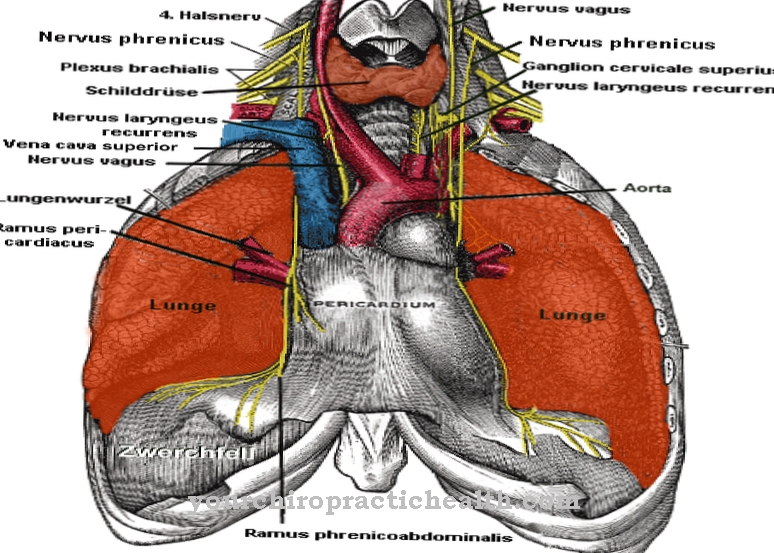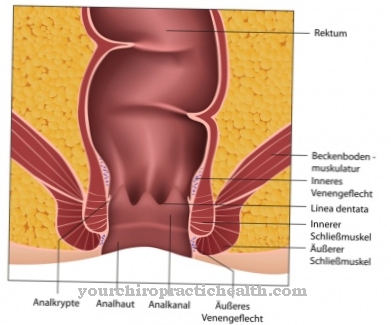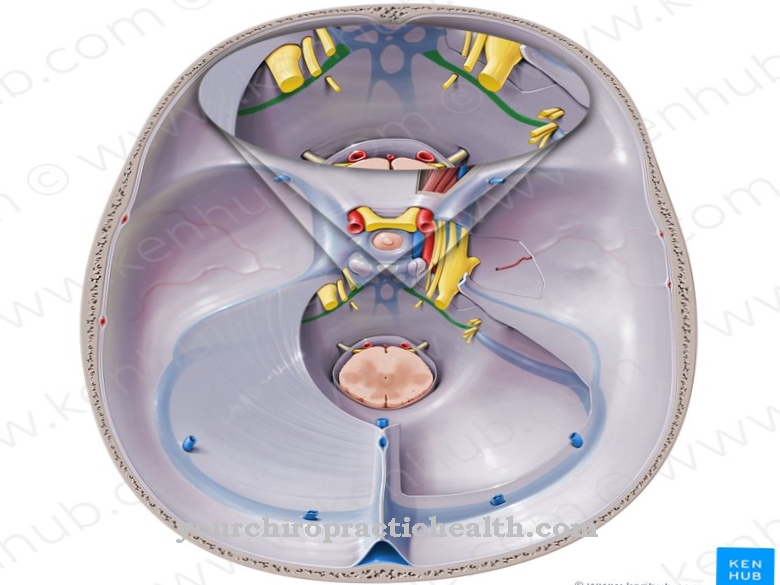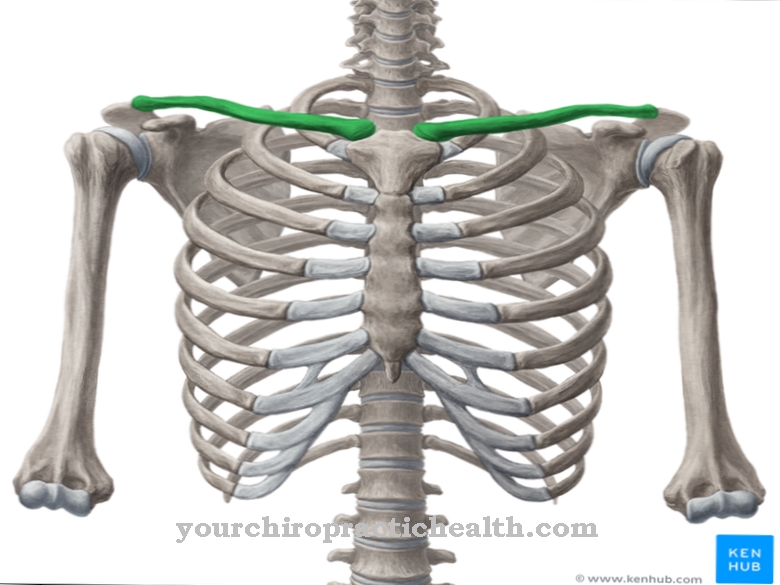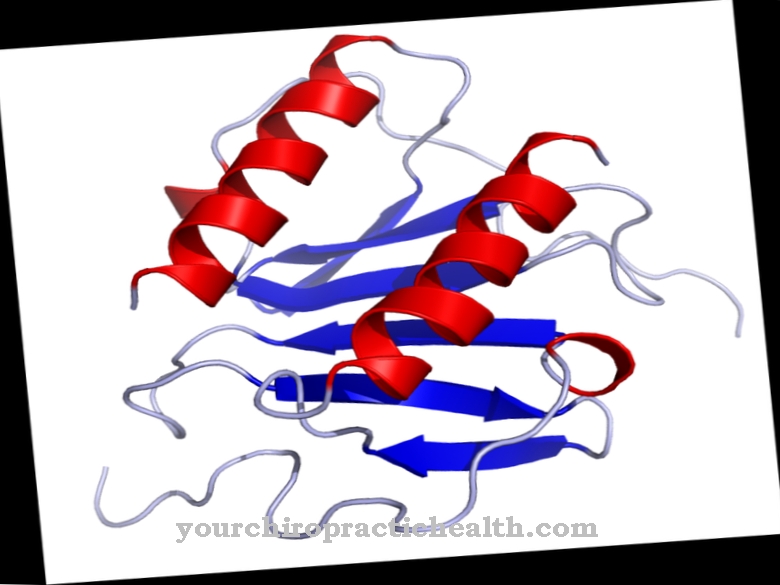The pancreas produces digestive secretions, which through the Pancreatic duct reaches the top of the small intestine. If the duct or the mouth is narrowed, for example by frequently occurring gallstones, the pancreatic secretions build up, which can lead to pancreatitis.
What is the pancreatic duct?
The pancreatic duct is the duct of the exocrine part of the pancreas. It branches into the acini of the pancreatic parenchyma, where it absorbs the secreted digestive enzymes and transports them to the duodenum. The pancreatic duct opens into the greater duodenal papilla (Vater) in the descending part of the duodenum.
Anatomy & structure
The pancreatic duct system consists of intralobular and interlobular sections and the main duct, the pancreatic duct. Within the acini, contacts begin with a small diameter and low epithelium.
In many other salivary glands, stripes with a cylindrical epithelium follow the contact pieces. Such pieces of strip are missing in the pancreas. The pancreatic parenchyma is divided into lobules. Each of these lobules, which consists of several serous acinous glands, is attached to an excretory duct that unites the contact pieces. The interlobular sections show a highly prismatic epithelium with short microvilli and secrete neutral, sialomucin-rich mucus. They open into the pancreatic duct, which runs lengthways through the pancreas. Histologically it resembles the interlobular parts; here, however, exfoliating cells occur and occasionally mucoid glands open into it.
The major pancreatic duct (Wirsungi) is 2 mm thick and in most cases ends together with the common bile duct, the main bile duct, on the major duodenal papilla. The mouth is formed by a sphincter muscle, the sphincter Oddi. In embryonic development, the pancreas and its excretory ducts arise from the fusion of the anterior and posterior pancreas. This fusion does not occur in 6-10% of people and a pancreas divisum is created. These individuals have a ductus pancreaticus minor or accessorius (Santorini), which opens at the papilla duodeni minor.
Function & tasks
The pancreatic duct transports the digestive enzymes formed in the pancreas to the duodenum. These are lipases (for fat digestion), amylases (for splitting carbohydrates) and proteases. The proteases are released in the form of proenzymes, i.e. inactive precursors. They are only activated in the small intestine to prevent the pancreas from autodigestion. These proteases are trypsin, chymotrypsin, elastase, phospholipase A and carboxypeptidase.
Bile acids that get into the pancreas could also trigger self-digestion. However, the pressure in the pancreatic duct system is higher than that in the bile duct system, which prevents reflux of bile. Fatty and amino acids in food cause the production of cholecystokinin in the I-cells of the duodenum and jejunum. This, as well as vegetative or neural stimulation, stimulates the acinar cells of the pancreas to produce and secrete digestive enzymes. Secretin, which is formed in the S cells of the duodenum when chyme from the stomach lowers the pH value in the duodenum, promotes the release of water, bicarbonate and mucins in the cells of the pancreatic ducts.
A total of 1000-2000 ml of pancreatic secretion are produced per day, which is moved forward by the secretion pressure alone. The pancreatic duct does not contain any myoepithelial cells, so it cannot contract.
Diseases
Gallstones and tumors on or next to the Papilla duodeni Vateri can obstruct the duct or compress it from the outside. Duodenal diverticula can functionally impair the Oddi sphincter.
In these cases, the pancreatic secretion backs up into the pancreas. The proteolytic enzymes are then activated within the pancreatic duct system, which leads to autodigestion of the pancreas, necrosis and acute pancreatitis. Elastase attacks the vessel walls, causing bleeding. Lipases and bile acids cause adipose tissue necrosis. Phospholipase A converts lecithin into the cytotoxic lysolecithin. Kallikrein is also formed in the pancreas, among other things. When activated, bradykinin is released, which causes vasodilation and even shock. Acute pancreatids have an overall mortality of 10-20%.
Trauma can tear the ducts apart. The escape of pancreatic enzymes into the abdomen causes necrosis and peritonitis there. Autodigestive necrosis in the pancreas leads to fibrosis and scarring of the pancreatic ducts in the affected area, and this stenosis in turn increases the risk of re-pancreatitis. The pancreatic tissue in front of the stenosis atrophies.
Although it usually remains symptom-free, a pancreas divisum favors the development of acute or chronic pancreatitis if the papilla duodeni minor has insufficient drainage capacity or is only slightly stenosed, for example due to focal inflammation. The ductal adenocarcinoma also emerges from the epithelial cells of the excretory ducts. It has an overall low incidence of 10 per 100,000 per year, but is by far the most common pancreatic cancer.
It is highly malignant and has a high mortality rate. The pancreatic carcinoma is mostly located in the head of the pancreas, which can lead to stenosis of the intrapancreatic parts of the pancreatic duct and the common bile duct. Symptoms only appear in a late phase, so that the tumor is often inoperable when the diagnosis is made.
Tumors on the papilla Vateri, which have the same histology as ductal pancreatic carcinoma, on the other hand, cause jaundice early on due to the backlog of the bile. This leads to a faster diagnosis, which is why these neoplasms have a better prognosis.
Typical & common diseases of the pancreas
- Inflammation of the pancreas (pancreatitis)
- Pancreatic cancer (pancreatic cancer)
- Diabetes mellitus

